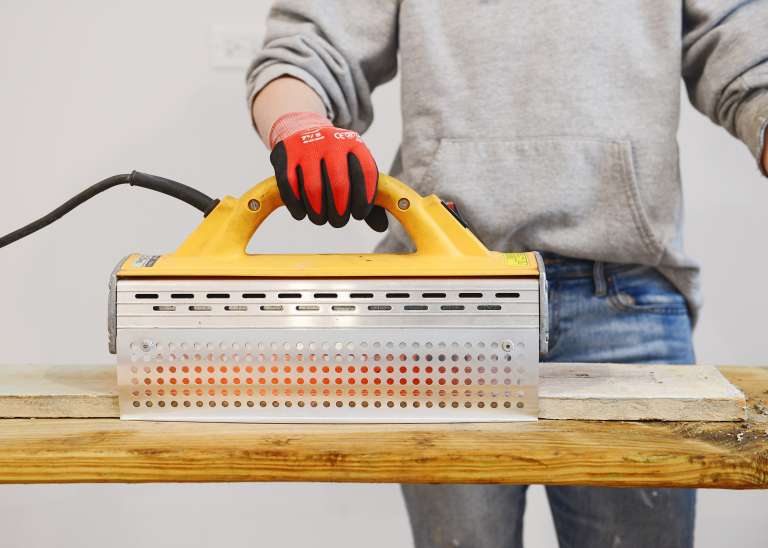Paint removal is a technique that requires special skill to prevent damage to the surfaces from where paint is removed. The traditional methods for paint removal require a lot of skill and time. Infrared heat gun may be used for paint removal that is much more fast, reliable, and safe.
Infra Red Paint Removal Techniques

The infra red paint removal involves the use of infrared heat gun for the rapid and simple softening of paint and varnish layers from doors, window shutters, and numerous other surfaces. Infrared heat pierces deep into the paint layers, due to which the paint layers are warmed, and can be removed easily. Infrared heat gun is a safe and convenient method for paint removal, since the paint is heated to a much lower temperature compared to the paint removal by traditional heat guns.
This technique has also been used successfully for the removal of lead based paints, reducing the lead paint exposure. The paint is heated by the remover for a few seconds, and then removed by scraping. Multiple paint layers can be removed rapidly and efficiently. Infrared inspections will indicate the lead paint exposure due to the infrared heat gun.
Advantages for Lead Paint Removal By Infra Red

The lead based paint removal by infrared techniques is safe because the paint is heated to a low temperature. The vaporizing temperature of metallic lead is much higher than that of the lead oxide in paint. Therefore, hazardous lead fumes cannot be liberated from the paint.
The paint that is removed is soft and falls on a sheet placed for the paint collection. Thus, the paint is easily contained and removed. The conventional technique of pressure washing the affected area is not safe, since some of the paint chips remain in the working area.
Infra Red for Wood Paint Removal

Paint removal from wood is a difficult process using conventional methods, due to its destructive effects on wood. This is exceptionally pertinent for the historic goods where protection of the fundamental wood is desired. Chemicals may release the natural resins from wood, and their residuals may remain in wood after rinsing or neutralizing.
The high temperatures produced by the heat guns may push the paint pigments into the wood. The wood may even be scorched or ignited. Wood shaving and sanding may create scratches or grooves if not executed carefully. Washing of wood by pressure can drive the dampness into the wood, threatening the new paint adherence, and producing irregular marks on the surface.
Wood paint removal by infrared is a gentle process. The heat of infrared pierces deep into the wooden materials, causing reorientation of the natural resins, and revival of the wood. The varnish or paint that has been lowered into the wood is also pulled out. Thus, their scraping is simple, and complete. Funguses are eliminated by the heat.
Since the temperatures are low, the risk of fire and wood scorching is low. After paint removal by infrared, primer paint can be applied immediately, without any waiting period for drying. The heated wood is instantly adequately dry for the primer application. Slight sanding of wood surfaces may be required. It is desirable to prime the surface early for the prevention of moisture seepage into the wood.
Desirable Characteristics of Infrared Paint Removers

Paint removal by infrared techniques is not as simple as the traditional methods, and need to possess special characteristics. Some of these are:
○ Infrared application should conform to the safety standards.
○ Infrared bulbs should be protected from breakage.
○ Overheating should be prevented by a shut off mechanism.
○ An appropriate distance between the wood and bulbs be maintained.
○ Suitable infrared wavelengths for a low temperature to prevent fire should be ensured.
○ The operator should be properly trained for the infrared application.



Comments are closed